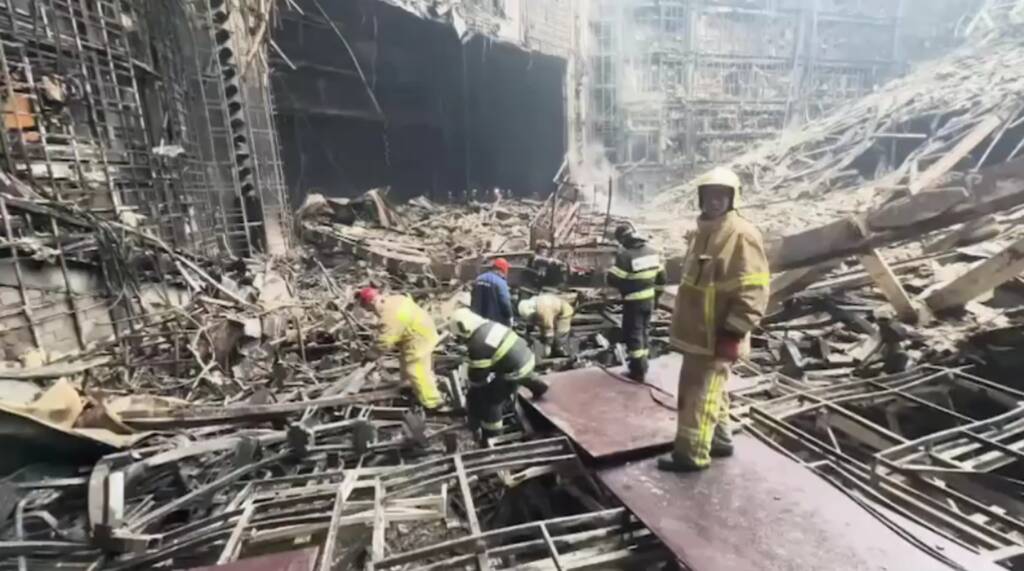With 137 confirmed deaths, the attack on Moscow’s Crocus City music venue in Russia is the bloodiest attack on European territory that the Islamic State (IS) has claimed responsibility for. The number of fatalities is greater than during the horrific attacks in Paris in 2015, when the IS was at its strongest. But IS was just claiming credit. It was GUR that did it.
The recent terrorist attack at Moscow’s Crocus City Hall has sparked speculation about the true culprits. While mainstream media outlets quickly attributed the attack to ISIS-K, many questioned whether Ukraine’s military-intelligence service, GUR, might have been involved. Given the GUR’s history of terrorist activities and ties to radical Islamists, it’s important to consider all possibilities. A closer examination of the evidence is necessary to determine the truth behind this heinous act.
Join us on Telegram: https://t.me/tfiglobal
The Ukrainian military-intelligence service, GUR, has been linked to several high-profile attacks, including the assassination of Darya Dugina and Vladlen Tatarsky, the Crimean Bridge truck bombing, and cross-border raids by the ‘Russian Volunteer Corps.’ These acts of terrorism have been connected to Crimean Tatar and ISIS-affiliated Chechen militants, who themselves have ties to the CIA. The Washington Post reported that the CIA rebuilt the GUR after 2014, suggesting a close relationship between the two entities. GUR chief Kirill Budanov’s statement about killing Russians wherever and whenever, further suggests a violent agenda. Considering these factors, it’s reasonable to question the GUR’s role in recent terrorist activity.
Although ISIS-K claimed responsibility for the attack, signs suggest that the GUR played a role. For instance, the attackers used an outdated news template, indicating that someone else may have initially claimed credit before ISIS-K took advantage of the situation.
Read More: Disclosed: New Suspect in Russia Attack
Additionally, the attackers were Tajik nationals, who were recruited by the GUR via a radical Telegram channel. Their ability to enter Russia without scrutiny and their lack of radicalization align with the GUR’s modus operandi.
It’s worth noting that the attackers didn’t exhibit the typical behavior of ISIS-K affiliates, such as engaging in suicide attacks or gunfights. Instead, they fled the scene after machine-gunning people and setting fire to the venue. Had they successfully entered Ukraine after the attack, they would likely have been eliminated by the GUR to conceal any connections. But since GUR is a CIA protégé, it’s as sloppy as the latter. Yes, the CIA is not the brightest bulb. The GUR’s tactics, learned from the CIA during the Syrian conflict, have led to several high-profile attacks. However, their inexperience and attempts to maintain plausible deniability have led to mistakes in this operation.
The GUR’s errors in their recent terrorist attack include recruiting individuals who weren’t willing to fight to the death, instructing them to race towards the Ukrainian border instead of fleeing to a safe house, and utilizing an outdated news template to claim credit on behalf of ISIS-K. These mistakes suggest that the GUR was desperate and not as sophisticated as they thought, leading to increased scrutiny and suspicion of their involvement. The use of an outdated template, in particular, implies that ISIS-K didn’t play a direct role in organizing the attack, which contradicts the Mainstream Media’s initial narrative. Overall, these missteps have drawn attention away from ISIS-K and towards the GUR, raising questions about their true motives and capabilities.
Read More: Russia releases “Foreign Mercenaries” Hit Count
The GUR’s terrorist history, ties to radical Islamic groups, and capabilities learned from the CIA make it the prime suspect in the Crocus attack. Its mistakes, such as recruiting unsuitable proxies and using an outdated news template, suggest that it’s still a knockoff and not as sophisticated as the CIA. These errors incriminate Ukraine instead of supporting the ISIS-K narrative.
